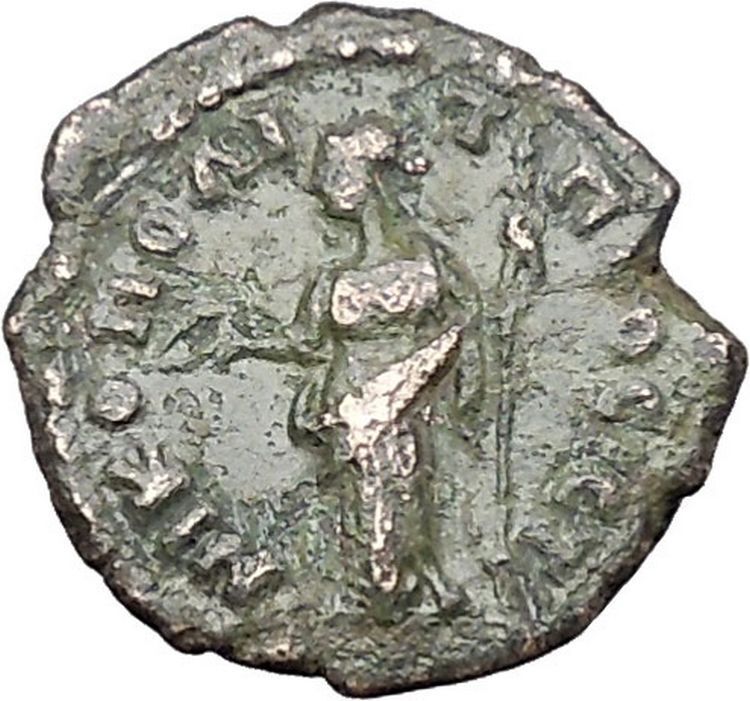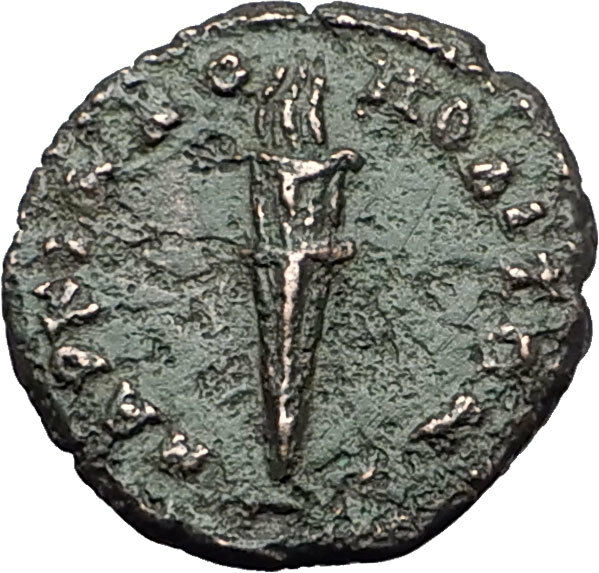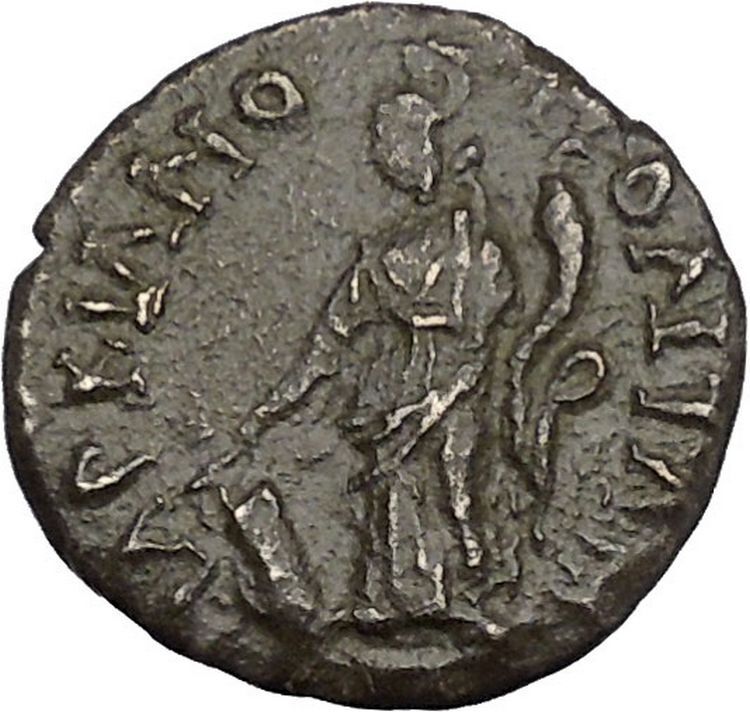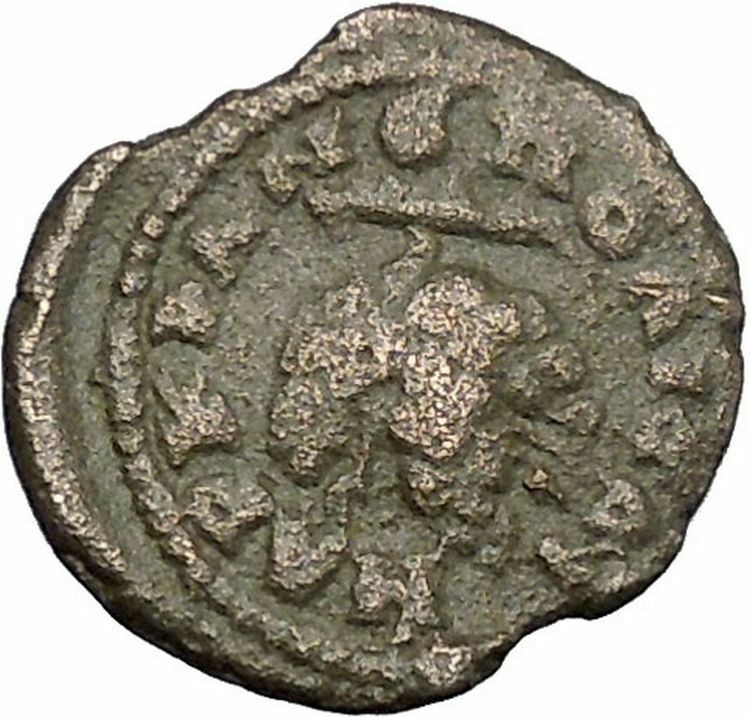|
Diadumenian – Roman Caesar: 218 A.D.
Bronze 17mm (1.84 grams) of Marcianopolis in Moesia Inferior, Struck as Caesar, circa 217-218 A.D.
Bare-headed, draped and cuirassed bust right.
MAPKIANOΠOΛEITΩN, Serpent peering out head out of half-open cista mystica.
You are bidding on the exact item pictured, provided with a Certificate of Authenticity and Lifetime Guarantee of Authenticity.
A cista (kiste) in the classical world was generally a casket, used for example to hold unguents or jewels. More specifically, in the Mystery cult, a cista mystica (literally “sacred chest”) is a basket or chest used to house snakes. Cistae mystica were used in the initiation ceremony of the cult of Bacchus or Dionysus, as well as an early gnostic sect called the Ophites. Cistae mysticae appear on ancient Roman and Greek coins.
Furthermore small Cistas were worked in Etruria, contained in cylindrical bronze containers for domestic use and storage of toiletries. Their faces were usually adorned engraved with figures, soldered on the top small bronze figures.
The Cista could be realized with different materials like wicker, wood, rawhide, but above of all in metal, used from the 5th century. The Etruscans manufactured it in different qualities from the 5th century, at first in ovoid form with thrown scenes, and then in cylindrical form with engraved scenes. The handle of the lid consisted of little structures. One of the most important city of production of Cista is Preneste, an old city of Lazio, which realised different types of Cista from the 4th century.
Marcianopolis, or Marcianople was an ancient Roman city in Thracia. It was located at the site of modern day Devnya, Bulgaria.
The city was so renamed by Emperor Trajan after his sister Ulpia Marciana, and was previously known as Parthenopolis. Romans repulsed a Gothic attack to this town in 267 (or 268), during the reign of Gallienus. Diocletian made it the capital of the Moesia Secunda province.
Valens made it his winter quarters in 368 and succeeding years, Emperor Justinian I restored and fortified it. In 587, it was sacked by the king of the Avars but at once retaken by the Romans. The Roman army quartered there in 596 before crossing the Danube to assault the Avars.
Between 893 and 972 it was one of the most important medieval cities in south-eastern Europe.
 Diadumenian – Roman Caesar: 218 A.D. Diadumenian – Roman Caesar: 218 A.D.
Son of Macrinus
Marcus Opellius Antoninus Diadumenianus or Diadumenian (208-218) was the son of the Roman Emperor Macrinus, and served his father briefly as Caesar (May 217-218) and as Augustus (in 218). Diadumenian was born in 14th of September 208 a.C or according to Historia Augusta in 19th of September 208 a.C because he shared the same birthday with the emperor Antoninus Pius. His mother was Empress Nonia Celsa, although her existence remains dubious, because she was only mentioned by the Historia Augusta. He was born Marcus Opellius Diadumenianus, but his name was changed and added Antoninus to solidify connection to the family of Marcus Aurelius as done by Caracalla.
Diadumenian had little time to enjoy his position or to learn anything from its opportunities because the legions of Syria revolted and declared Elagabalus ruler of the Roman Empire. When Macrinus was defeated on June 8, 218, at Antioch, Diadumenian followed his father’s death.
|





 Diadumenian – Roman Caesar: 218 A.D.
Diadumenian – Roman Caesar: 218 A.D.




